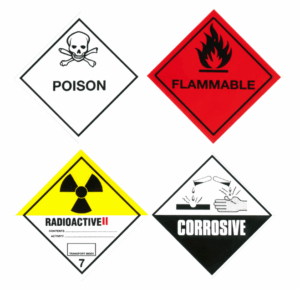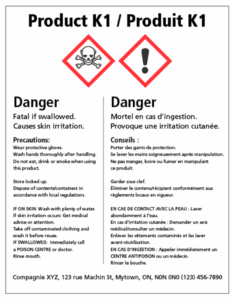WHMIS Basics
Workplace Hazardous Materials Information System
Core Elements

1. Classification
Hazardous products are grouped based on their physical and health hazards, such as flammability, toxicity, or corrosiveness.

2. Labels
Hazardous products are grouped based on their physical and health hazards, such as flammability, toxicity, or corrosiveness.

3. Safety Data Sheets
SDSs provide detailed technical information about each product, including safe use, handling, storage, emergency procedures, and first aid. Employers must ensure SDSs are available and accessible to all workers.

Employers are responsible for providing training on WHMIS labels, SDSs, and procedures for using hazardous products safely. Training must be updated whenever new hazards are introduced or procedures change.
Who Enforces WHMIS?
WHMIS is a shared responsibility.
Health Canada administers the overall system and sets classification and labelling requirements.
- Provincial and territorial regulators enforce WHMIS in most workplaces.
Federal departments and federally regulated employers follow specific WHMIS requirements under Part II of the Canada Labour Code and related regulations.
Why WHMIS Matters
WHMIS helps reduce the risk of chemical-related injuries and illnesses. It gives workers the right to know what hazards they are exposed to and how to protect themselves.
It also supports employers in meeting their legal obligations for health and safety in the workplace.
Looking for WHMIS training for your organization?
TRAINING YOUR WAY
Courses can be customized with your branding and delivered in a SCORM-compliant file or through our PRO Hosted LMS.
Stay compliant, keep workers safe, and meet your legal obligations with trusted WHMIS training from HR Proactive. Accessible anytime, anywhere.
Contact us now to get started or request a customized quote.
- 1 (888) 552-1155
- sales@hrproactive.com
